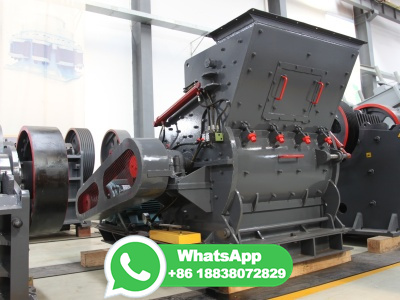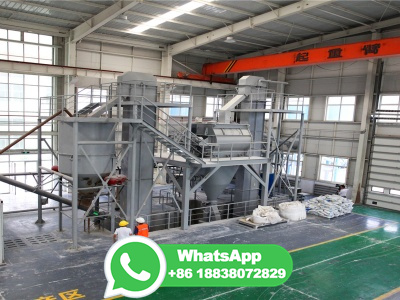
A brief introduction to recent developments in iron ore pelletizing is provided in this chapter, including the world output of fired pellets, pellet production processes, preparation of pellet feed, inorganic and organic binders, and new additives.
WhatsApp: +86 18037808511
Humic substancebased binder (HB) has been found to be an effective substitution for bentonite in the production of iron ore pellets. In this study, it was found that the preheating time needed to be prolonged during the pelletization processing which is a remarkable feature of pellets with HB instead of bentonite.
WhatsApp: +86 18037808511
machine, resulting in negative consequences for both pelletizing capacity and pellet . ... There is great incentive to reduce bentonite use in iron ore pelletization by improving its effectiveness ...
WhatsApp: +86 18037808511
Molasses was used as an alternative binder to the bentonite binder. The change in moisture absorption by pellets prepared with different iron ores and different molasses contents were investigated. Iron ore properties exerted the major effect on pellet behavior and final pellet quality. The absorbed moisture content of pellets prepared without binder, bentoniteadded pellets, and molasses ...
WhatsApp: +86 18037808511
As known, in order to produce green pellets, bentonite binder (< 1 wt%) and moisture (89 wt%) is added to the iron ore concentrates powder with particle size of less than 45 microns. Then, the mixture of raw materials is transformed into the 916 mm diameter green pellet by balling disk [ 5 ].
WhatsApp: +86 18037808511
ture is required, as well as a binder agent, for instance bentonite or Portland cement. The mixture is sent to the extrusion machine to obtain the agglomerated product [8]. Pelletization Pelletization is an agglomeration process of iron ore concentrates with a granulometry lower than 150 m and low concentration of impurities [10, 11].
WhatsApp: +86 18037808511
What Is Iron Ore Pelletization Process. ... The next step involves grinding this dried residue, with the addition of Bentonite which is a binder chemical. This concentrate is then passed through a specialized machine, known as a disc pelletizer, that helps form standardsized pellets. Once pellets are formed they are hardened under high ...
WhatsApp: +86 18037808511
Bentonite is the traditionally used binder in iron ore pelletization. However, it consists of up to 85% silica and alumina which are undesired acidic gangue in ironmaking.
WhatsApp: +86 18037808511
The selection of an appropriate binder type and dosage is of critical importance in producing good quality pellets at a reasonable price. Binders accomplish two very important functions in iron ore pelletization: The binder makes the moist ore plastic, so that it will nucleate seeds that grow at a controlled rate into wellformed pellets.
WhatsApp: +86 18037808511
fine concentrate. The most commonly employed one is pelletizing in iron ore industry. In pelletizing, iron ore, water and a binder are balled in a mechanical disc or drum to produce agglomerates. Bentonite is the most widely used binder. However, it is considered as an impurity due to its high SiO 2 and Al 2O 3 content. Many researchers have ...
WhatsApp: +86 18037808511
Arrium Australia 440 Iron Ore. The pelletizing process involves the preparation of ra w materials; the proportioning. and mixing of raw materials; the formation, preheating, and ...
WhatsApp: +86 18037808511
In the pelletization process, the iron ore fines are converted into green pellets using drum or disc pelletizer, wherein binder and moisture are added to provide the necessary green strength. The green pellets being fragile are subsequently transferred to induration furnace, wherein the green pellets get fired to achieve the desired properties ...
WhatsApp: +86 18037808511
The functions and molecular structure of organic binders for iron ore pelletization have been investigated in this paper based on the basic principles of molecular design, interface chemistry and polymer science as well as failure model of binding systems. The following conclusions are achieved. Functionally, good organic binders for iron ore ...
WhatsApp: +86 18037808511
Bentonite is the most used binder due to favorable mechanical and metallurgical pellet properties, but it contains impurities especially silica and alumina. The importance of many researches concerning alternative binders is also discussed in this chapter.
WhatsApp: +86 18037808511
particles to form iron ore pellets. Second, most of the tests require up to 20 hours to perform. Bentonite only has afew minutes to interact within the concentrate before it is indurated (sintered). For this reason, these longterm tests may not reflect the true behavior of bentonite during iron ore pelletization. Third, the tests are
WhatsApp: +86 18037808511
Although bentonite clay is the most commonly used binder, there are many other possibilities that could be competitive in a number of situations. This article reviews the numerous types of binders (both organic and inorganic) that have been considered for iron ore pelletization, including discussion of the binding mechanisms, advantages and ...
WhatsApp: +86 18037808511
Iron Ore Pelletization: Part I. Fundamentals. ABSTRACT The behavior of iron ore pellet binders is complex. Any pellet binder is subject to a handful of practical requirements: that it be readily dispersed through a pellet, that it effectively controls the movement of water within the pellet, and that it contributes to the interparticle bonding ...
WhatsApp: +86 18037808511
ABSTRACT This part reviews the goals of introducing organic binders into iron ore pelletization. Organic binders present a relatively small number of unique binding options but provide an extraordinary amount of flexibility in how to apply them. The key factors that lead into an effective organic binder are good dispersion into the iron ore, the ability to maintain the dispersion of the iron ...
WhatsApp: +86 18037808511
Pellet ore not only has excellent metallurgical and mechanical properties, but is also an important metallurgical raw material used to solve the problem of increasing depletion of global highgrade iron ore resources. Bentonite has long been widely used in pellet ore production, which is not only expensive but also causes serious metallurgical pollution. Organic binders can form stronger ...
WhatsApp: +86 18037808511
CCS was measured for 20 pellets in a compression testing machine (SETT2000, Shanta Engineering, Mumbai, India) following the standard procedure of ISO 4700. ... Bentonite is the most common binder to be used in iron ore pelletization. However, bentonite contributes to additional alumina and silica in the pellet, decreasing the iron content ...
WhatsApp: +86 18037808511
The pelletization process is the primary consumer of binders in the iron ore industry. The selection of an appropriate binder type and dosage is of critical importance in producing good quality pellets at a reasonable price. Binders accomplish two very important functions in iron ore pelletization: .
WhatsApp: +86 18037808511
Bentonite is a significant cost item in iron ore pelletization, and also contributes undesirable amounts of silica to the finished pellets. If the binding effectiveness of bentonite is increased, it will be possible to reduce the bentonite dosage, resulting in significant cost savings while producing higher quality, lower silica pellets.
WhatsApp: +86 18037808511
Pellets from the concentrates with the composition given in Table 1 and fluxes were chosen as objects of rocks with the comparable content of CO 2, 43 ± 2%, were used as dosage was chosen to achieve the cementsand ratio B 2 = CaO/SiO 2 of and The amount of binder (bentonite powder) in all the experiments was taken % (dry weight).
WhatsApp: +86 18037808511
FOR IRON ORE PELLE"nZATION By Larry A. Haas,1 Jeffrey A. Aldinger,2 and Robert K. Zahl3 ABSTRACT The Bureau of Mines investigated the use of organic binders as substitutes for bentonite in agglomerating iron ore concentrate. Over 30 organic binders were evaluated at several dosage levels in laboratory tests.
WhatsApp: +86 18037808511
ABSTRACT Humic substances exist widely in lignite coal as high molecular weight organic molecules. They can be used as binders in iron ore pelletization mostly in the form of salt, such as sodium humate and amine humate via extraction from lignite coal. It is worth determining if lignite can be used as a binder without extraction. As a composite binder of organic and inorganics, due to the ...
WhatsApp: +86 18037808511